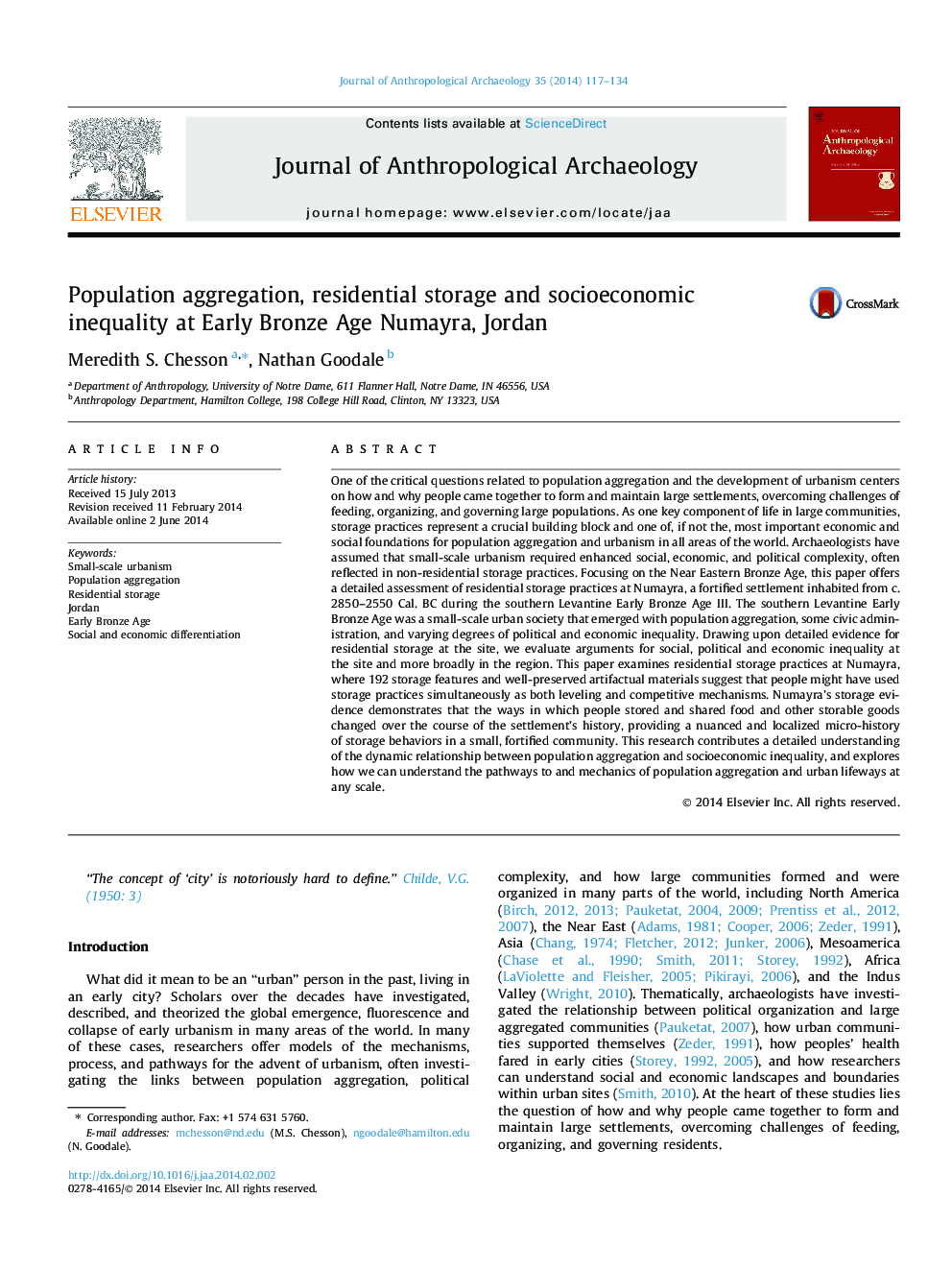| کد مقاله | کد نشریه | سال انتشار | مقاله انگلیسی | نسخه تمام متن |
|---|---|---|---|---|
| 1034960 | 1483855 | 2014 | 18 صفحه PDF | دانلود رایگان |

• We explore the dynamics of small-scale urbanism through the lens of residential storage.
• We challenge the linkage of population aggregation to emergence of pronounced social inequality.
• Excellent preservation at Numayra, Jordan offers a rich case study of socioeconomic inequality.
• Storage provided an arena in EBA II-III communities to limit and expand socioeconomic inequality.
One of the critical questions related to population aggregation and the development of urbanism centers on how and why people came together to form and maintain large settlements, overcoming challenges of feeding, organizing, and governing large populations. As one key component of life in large communities, storage practices represent a crucial building block and one of, if not the, most important economic and social foundations for population aggregation and urbanism in all areas of the world. Archaeologists have assumed that small-scale urbanism required enhanced social, economic, and political complexity, often reflected in non-residential storage practices. Focusing on the Near Eastern Bronze Age, this paper offers a detailed assessment of residential storage practices at Numayra, a fortified settlement inhabited from c. 2850–2550 Cal. BC during the southern Levantine Early Bronze Age III. The southern Levantine Early Bronze Age was a small-scale urban society that emerged with population aggregation, some civic administration, and varying degrees of political and economic inequality. Drawing upon detailed evidence for residential storage at the site, we evaluate arguments for social, political and economic inequality at the site and more broadly in the region. This paper examines residential storage practices at Numayra, where 192 storage features and well-preserved artifactual materials suggest that people might have used storage practices simultaneously as both leveling and competitive mechanisms. Numayra’s storage evidence demonstrates that the ways in which people stored and shared food and other storable goods changed over the course of the settlement’s history, providing a nuanced and localized micro-history of storage behaviors in a small, fortified community. This research contributes a detailed understanding of the dynamic relationship between population aggregation and socioeconomic inequality, and explores how we can understand the pathways to and mechanics of population aggregation and urban lifeways at any scale.
Figure optionsDownload high-quality image (149 K)Download as PowerPoint slide
Journal: Journal of Anthropological Archaeology - Volume 35, September 2014, Pages 117–134